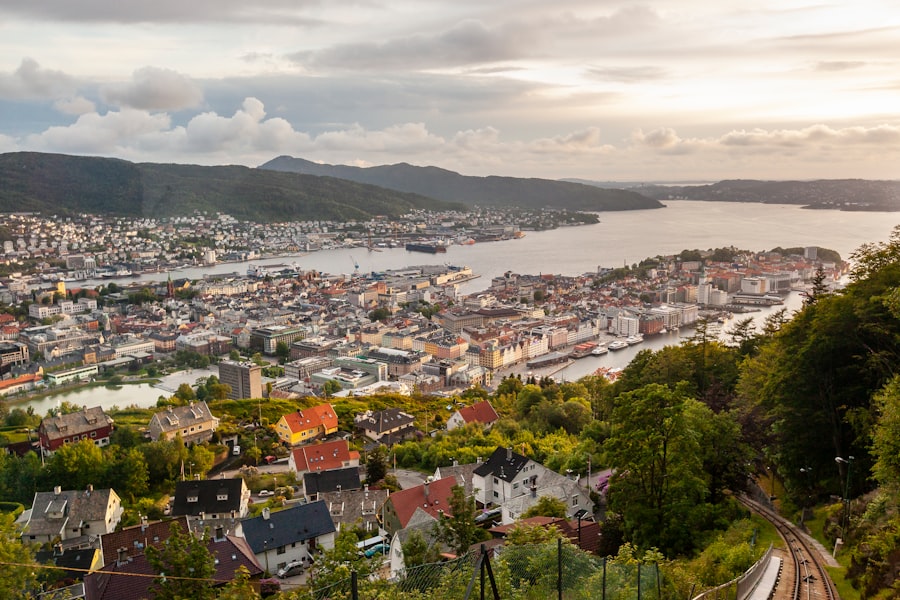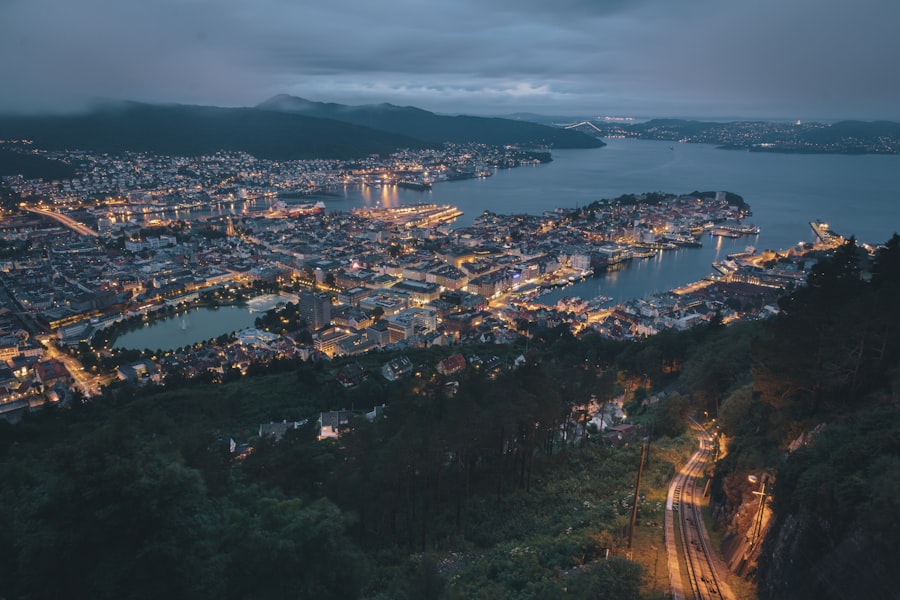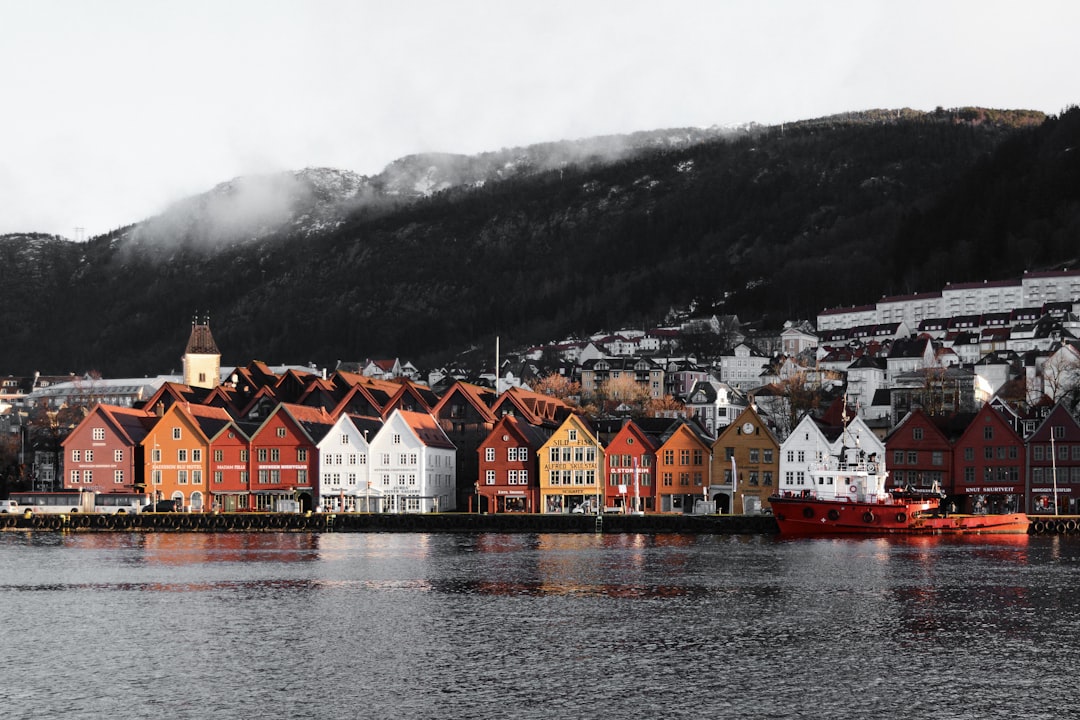Halloween in Norway has gained popularity over the years, evolving from a relatively obscure celebration to a vibrant occasion filled with costumes, decorations, and festivities. Traditionally, Norwegians did not celebrate Halloween, but the influence of American culture has led to a growing enthusiasm for this spooky holiday. Children eagerly anticipate the 31st of October, donning costumes ranging from ghouls and witches to superheroes and princesses.
The streets come alive with laughter and excitement as children go door-to-door, shouting “knask eller knep,” which translates to “trick or treat,” in hopes of receiving sweets and treats. In addition to the trick-or-treating, many communities host Halloween-themed events, such as haunted houses and pumpkin carving competitions. The latter has become particularly popular, with families gathering to carve intricate designs into pumpkins, which are then displayed on porches and windowsills.
While Halloween in Norway may not have the same historical roots as in other countries, it has certainly carved out its own niche in the cultural landscape, blending traditional Norwegian elements with modern festivities. Your journey to a smooth relocation starts here. Talk one-on-one with a Norway Relocation specialist and turn your plan into a reality.
Summary
- Halloween in Norway is becoming increasingly popular, with people embracing the tradition of dressing up and carving pumpkins.
- All Saints’ Day is a time for Norwegians to honour their deceased loved ones by visiting cemeteries and lighting candles.
- Diwali in Norway is celebrated by the Indian community with traditional rituals, colourful decorations, and delicious feasts.
- St. Martin’s Day is marked by children going door to door, singing songs and receiving treats, similar to Halloween.
- Thanksgiving in Norway is observed by some expatriates and those who have embraced the American tradition, with a focus on gratitude and a festive meal.
All Saints’ Day: Observing the Day in Norwegian Culture
All Saints’ Day, or “Allehelgensdag,” is a significant observance in Norway, falling on the first Sunday of November. This day is dedicated to honouring all saints and martyrs, both known and unknown. In Norwegian culture, it is a time for reflection and remembrance, where families gather to pay tribute to their loved ones who have passed away.
Many Norwegians visit cemeteries, bringing flowers and lighting candles on graves as a gesture of love and remembrance. The soft glow of candlelight against the darkening autumn sky creates a poignant atmosphere that resonates deeply within the community. In addition to visiting cemeteries, All Saints’ Day is often marked by church services that focus on themes of hope and eternal life.
These services provide an opportunity for individuals to come together in prayer and reflection, fostering a sense of community and shared experience. The day serves as a reminder of the importance of family ties and the enduring connections that transcend even death. As Norwegians observe All Saints’ Day, they embrace both the solemnity of the occasion and the warmth of cherished memories.
Diwali in Norway: How the Festival of Lights is Celebrated

Diwali, known as the Festival of Lights, is celebrated by the Indian community in Norway with great enthusiasm and joy. This vibrant festival typically falls between October and November, marking the triumph of light over darkness and good over evil. In Oslo and other major cities, Indian families come together to celebrate with traditional rituals, feasting, and cultural performances.
Homes are adorned with colourful rangoli designs made from coloured powders and flowers, while oil lamps and candles illuminate the surroundings, creating a warm and inviting atmosphere. The celebrations often include communal gatherings where families share delicious Indian cuisine, showcasing a variety of dishes that reflect the rich culinary heritage of India. Cultural events featuring music and dance performances are also organised, allowing participants to immerse themselves in the festive spirit.
The sense of community during Diwali in Norway is palpable, as people from diverse backgrounds come together to celebrate this joyous occasion, fostering understanding and appreciation for different cultures.
St. Martin’s Day, or “Martinsmesse,” is celebrated on November 11th in Norway, marking the end of the harvest season and the beginning of winter preparations. This day is steeped in tradition, with roots tracing back to ancient agricultural practices.
In rural areas, it was customary for farmers to hold feasts to celebrate the successful harvest and to prepare for the colder months ahead. Today, St. Martin’s Day is often associated with various customs that reflect both its agricultural origins and its religious significance.
One of the most charming traditions associated with St. Martin’s Day is the practice of lantern processions. Children create colourful lanterns from paper or other materials and walk through their neighbourhoods singing songs related to St.
Martin. This enchanting sight brings communities together as families gather to enjoy the festivities. Additionally, many Norwegians indulge in traditional foods such as roasted goose or duck, which are often served during festive meals.
St. Martin’s Day serves as a reminder of the changing seasons and the importance of community bonds during this transitional time.
Thanksgiving in Norway: Embracing the American Tradition
Thanksgiving is primarily an American holiday; however, it has found its way into Norwegian culture through various channels, including expatriate communities and globalisation. While not widely celebrated across the country, some Norwegians have embraced this tradition as an opportunity to express gratitude for their blessings and gather with family and friends. The celebration typically takes place on the fourth Thursday of November, mirroring its American counterpart.
In homes where Thanksgiving is observed, families often prepare traditional dishes such as turkey, stuffing, cranberry sauce, and pumpkin pie. The meal serves as a focal point for gatherings, where loved ones come together to share stories and reflect on what they are thankful for. In recent years, some Norwegian restaurants have even begun offering Thanksgiving menus to cater to those wishing to partake in this festive occasion.
While Thanksgiving may not be a national holiday in Norway, its spirit of gratitude resonates with many who appreciate the opportunity to celebrate togetherness.
Advent in Norway: Preparing for Christmas
Advent marks the beginning of the Christmas season in Norway, commencing four Sundays before Christmas Day. This period is characterised by anticipation and preparation as families engage in various traditions that build excitement for the festive celebrations ahead. One of the most cherished customs during Advent is the lighting of candles on an Advent wreath.
Each Sunday, an additional candle is lit until all four are aglow by Christmas Eve, symbolising hope and light during the dark winter months. In addition to lighting candles, many families partake in Advent calendars filled with small treats or gifts that are opened daily throughout December. This delightful tradition adds an element of surprise and joy for children as they count down to Christmas Day.
Advent also serves as a time for reflection and spiritual preparation for many Norwegians who attend church services during this period. As communities come together to celebrate Advent, they embrace both the festive spirit and the deeper meaning behind this special time of year.
Christmas in Norway: Traditions and Festive Customs

Christmas in Norway is a time steeped in rich traditions and festive customs that reflect the country’s cultural heritage. The celebrations typically begin on December 24th with “julaften,” or Christmas Eve, when families gather for a festive meal that often includes dishes such as ribbe (roast pork belly), pinnekjøtt (dried lamb ribs), and lutefisk (dried fish). After dinner, families exchange gifts under the beautifully decorated Christmas tree adorned with lights and ornaments.
One unique aspect of Norwegian Christmas traditions is the presence of “Julenissen,” or Santa Claus, who is believed to deliver presents on Christmas Eve. Children eagerly await his arrival while leaving out porridge for him as a gesture of goodwill. In addition to gift-giving and feasting, many Norwegians also participate in singing traditional carols that celebrate the joy of the season.
The warmth of family gatherings combined with age-old customs creates a magical atmosphere that encapsulates the essence of Christmas in Norway.
Hanukkah in Norway: Observing the Jewish Festival of Lights
Hanukkah, also known as the Festival of Lights, holds special significance for Jewish communities in Norway. This eight-day celebration typically falls between late November and late December, commemorating the rededication of the Second Temple in Jerusalem following its desecration by foreign rulers. In Norway, Jewish families observe Hanukkah by lighting candles on a menorah each night, reciting prayers, and sharing stories about their heritage.
The celebration often includes traditional foods such as latkes (potato pancakes) and sufganiyot (jelly-filled doughnuts), which are enjoyed by families during gatherings. Community events are also organised where individuals can come together to celebrate their faith through music, dance, and cultural activities. Hanukkah serves as an important reminder of resilience and hope within the Jewish community in Norway while fostering connections among those who share similar beliefs.
New Year’s Eve in Norway: Ringing in the New Year with Norwegian Traditions
New Year’s Eve in Norway is celebrated with great enthusiasm as people bid farewell to the old year while welcoming new beginnings. The festivities typically begin with family gatherings where delicious meals are shared alongside sparkling drinks to toast to health and happiness in the coming year. As midnight approaches, excitement builds as people prepare for fireworks displays that light up the night sky across cities and towns.
One unique tradition associated with New Year’s Eve in Norway is “Nyttårsfest,” where many individuals participate in outdoor celebrations featuring bonfires and fireworks displays. In some regions, it is customary for people to dress up in formal attire before heading out to join friends or neighbours for festivities that last well into the early hours of January 1st. As Norwegians ring in the New Year together amidst laughter and joy, they embrace both old traditions and new beginnings with open hearts.
Epiphany in Norway: Celebrating the End of the Christmas Season
Epiphany marks the end of the Christmas season in Norway and is celebrated on January 6th each year. This day holds religious significance as it commemorates the revelation of Christ to the Gentiles through the visit of the Magi. In Norwegian culture, Epiphany is often associated with various customs that reflect both its spiritual meaning and its connection to winter festivities.
One common tradition during Epiphany involves taking down Christmas decorations and returning homes to their pre-holiday state. Families may gather for one last festive meal before transitioning into everyday life after weeks of celebration. In some regions, children participate in processions or performances that recount stories from biblical accounts related to Epiphany.
As Norwegians bid farewell to Christmas during this time-honoured observance, they carry forward cherished memories while looking ahead to new opportunities.
Winter Solstice in Norway: Embracing the Longest Night of the Year
The winter solstice occurs around December 21st each year when daylight reaches its lowest point in Norway—a time when darkness envelops much of the country. Despite its somber nature, this occasion is embraced with warmth as communities come together to celebrate light amidst darkness through various traditions rooted deeply within Norwegian culture. Many Norwegians observe this day by lighting candles or bonfires symbolising hope for brighter days ahead while gathering with family or friends for shared meals filled with seasonal delicacies such as mulled wine (gløgg) or gingerbread cookies (pepperkaker).
Some communities organise events featuring music performances or storytelling sessions that highlight folklore associated with winter solstice celebrations throughout history. As winter solstice approaches each year—marking not only a turning point towards longer days but also an opportunity for reflection—Norwegians find solace within their traditions while embracing both lightness amidst darkness along their journey through winter months ahead. In conclusion, whether you are celebrating Halloween or Christmas or observing All Saints’ Day or Hanukkah, each occasion offers unique insights into Norwegian culture while fostering connections among communities across diverse backgrounds.
For those looking to relocate or immerse themselves further into these rich traditions while navigating life in Norway—consider reaching out to organisations like Norway Relocation Group who can provide invaluable assistance throughout your journey. Additionally, if you wish to learn more about Norwegian language skills essential for fully engaging with these cultural experiences—NLS Norwegian Language School located in Oslo offers comprehensive courses tailored specifically for newcomers eager to embrace their new home while enhancing communication abilities within local communities!
Register for a Norwegian class at the NLS Norwegian Language School now!

